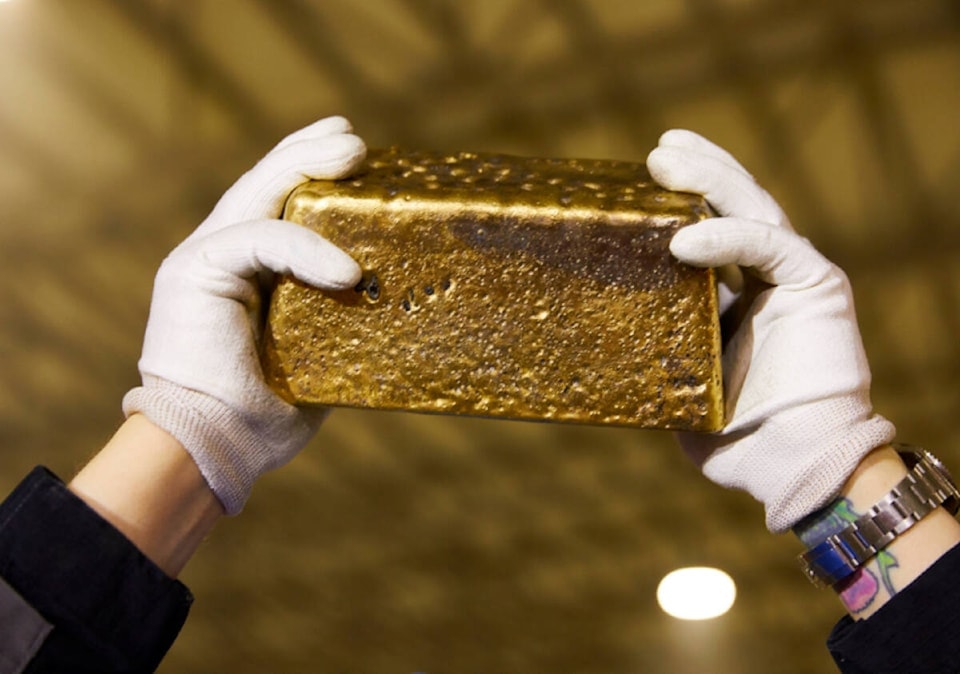The tale of two territories remains divergent.
Nunavut's 3.4 per cent growth in gross domestic product in 2023 was the strongest in the country, according to initial data from Statistics Canada in May.
The usual players were front and centre. Mining’s share of Nunavut’s GDP continues to expand, reaching a record high 46.7 per cent in 2023, up significantly from 28.5 per cent in 2019. All of that gold and iron extraction — and the related spin offs — represented $1.37 billion for the economy last year, a slight increase from $1.33 billion in 2022.
The next biggest player is public administration — or government — which accounted for 24.9 per cent of GDP. No other industries reached double digits.
In the neighbouring Northwest Territories, the economy was projected to contract last year. Despite the wildfires during the summer of 2023, GDP surprised and grew -- albeit by a feeble 0.6 per cent. The territorial government attributed that to "higher than expected investment in the diamond mines and construction of the Yellowknife swimming pool, combined with stronger than projected household and government spending."
Diamond mining, the backbone of the NWT economy for decades, fell by 1.9 per cent in 2023 and rare earths mining, a much smaller slice of the pie, was also wobbly.
Public administration, however, expanded by a modest 0.9 per cent year over year.
Since the Covid-19 pandemic, the public sector has expanded to 12,220 employees while the private sector has shrunk to 10,060 workers.
The GNWT, which has in the past emphasized the need for economic diversity without achieving it, acknowledged the benefits and the risks of a dominant public sector in its Economic Review 2024-25.
"Although an economy increasingly dependent on government could lead to a hollowing out of the private sector, the large public sector also acts as an economic stabilizer. Because government employment is not prone to the boom-and-bust cycles of the resource industry, it is able to offer relatively high incomes and steady employment during economic shocks such as pandemics and wildfires," the document states, later referring to the NWT economy as "resilient, mainly due to the stabilizing influence of government spending and employment."
And yet the same report contains the headers: "NWT economic growth is slowing" and "The NWT Economy Is Expected to Contract in 2024." The expectation, as of May 2024, is that the NWT's gross domestic product will be 1.1 per cent smaller this year.
The GNWT cannot afford to borrow much more either. It's $184 million below the federally-imposed debt wall of $1.8 billion.
The Government of Nunavut, owing $375 million to the federal government, is halfway to its borrowing limit.
In an op-ed in the Globe and Mail in July 2023, former NWT premier Caroline Cochrane blasted the federal government for failing to invest in the North and, consequently, opined that "the Northwest Territories risks being left behind in the race to supply economies with vital minerals and energy supplies."
With Nunavut already reaping the profits from mining and with another gold mine set to open in 2025, its government sends a different message about having a prominent public sector.
"Government looms large in the Nunavut economy, not only because of the high cost of providing public services in the Far North, but also because the territory’s private sector is typically quite small. One exception is mining, which accounts for roughly one-third of the economy — the industry’s highest share in Canada. A falling share of government GDP generally indicates economic maturation and diversification, which is welcome," reads the GN's 2024-25 Fiscal and Economic Indicators. "While mining’s cyclical nature makes capital investment in Nunavut inherently unstable, the territory’s capital prospects look bright."
The boom and bust cycle of mining is well established. With gold in the lofty $2,300-$2,400 per ounce range, Nunavut is certainly enjoying the boom. Nevertheless, its government can foresee similar struggles to what the GNWT is now experiencing.
"Since we cannot expect this type of mining expansion every year, going forward it will be necessary to increase productivity in other industries such as services — where gains can be much more difficult to come by," the GN stated.
